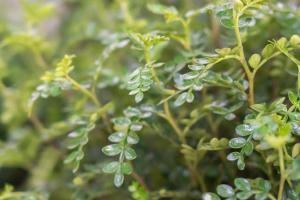The Effectiveness of Using In-Ground Soil for Potted Plants
When it comes to gardening, having healthy and vibrant plants is a top priority. Therefore, the soil used in planting plays a significant role in the growth and development of the plants. One common question among gardeners is whether in-ground soil can work for potted plants. In this article, we will explore the effectiveness of using in-ground soil for potted plants.
The Benefits of Using In-Ground Soil for Potted Plants
Using in-ground soil for potted plants has its advantages. First, in-ground soil is rich in nutrients that potted plants need for healthy growth. It contains organic matter, minerals, and microorganisms that promote plant growth. Second, in-ground soil has the right pH balance for most plants, making it a suitable growing medium. Third, in-ground soil is free and readily available, making it an affordable option for gardeners on a budget.
Potential Risks of Using In-Ground Soil for Potted Plants
While in-ground soil can offer several benefits for potted plants, it also comes with potential risks. One of these risks is the introduction of weed seeds and harmful pathogens into the potted plants. In-ground soil also has a tendency to compact, leading to challenges with water drainage and root growth. Additionally, in-ground soil may contain heavy metals and other contaminants that may be harmful to plants and humans alike.
How to Prepare In-Ground Soil for Potted Plant Use
Before using in-ground soil for potted plants, the soil needs to be prepared to reduce potential risks. First, the soil should be tested for pH and nutrient levels to ensure that it is suitable for the type of plants being grown. Second, the soil should be amended with organic matter, such as compost or aged manure, to improve its texture and nutrient content. Third, the soil should be sterilized to eliminate harmful pathogens and weed seeds. Sterilization methods include solarization, chemical treatment, and heat treatment.
How to Use In-Ground Soil for Potted Plants
When using in-ground soil for potted plants, it is crucial to ensure that the soil is well-draining. To achieve this, add sand, perlite, or vermiculite to the soil for better drainage. Additionally, place a layer of gravel or broken pot pieces at the bottom of the pot to create a drainage layer. Potted plants also require regular fertilization to ensure proper nutrient uptake. Apply a balanced fertilizer every four to six weeks to maintain optimal plant growth.
Conclusion
In conclusion, using in-ground soil for potted plants can be an effective and affordable way to promote healthy plant growth. However, gardeners must be aware of the potential risks associated with using in-ground soil and take appropriate measures to reduce these risks. By preparing in-ground soil correctly and amending it with organic matter, gardeners can create a nutrient-rich growing medium that promotes proper plant development. With the right combination of soil, light, and moisture, potted plants can thrive and add beauty to any indoor or outdoor space.

 how many times do yo...
how many times do yo... how many planted tre...
how many planted tre... how many pine trees ...
how many pine trees ... how many pecan trees...
how many pecan trees... how many plants comp...
how many plants comp... how many plants can ...
how many plants can ... how many plants and ...
how many plants and ... how many pepper plan...
how many pepper plan...
































